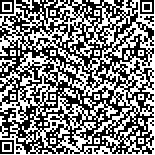| 本文已被:浏览 1480次 下载 543次 |

码上扫一扫! |
| 超声破碎和胰蛋白酶酶解奶牛胎盘制备还原性多肽方法的建立与优化 |
|
沈留红1,朱颍琨1,张钺1,尤留超1,钱柏霖1,石湉2,董可3,张帅杰3,吴禹熹3,余树民1,曹随忠1,王娅1*
|
|
|
| (1.四川农业大学 动物医学院/动物疫病与人类健康四川省重点实验室/奶牛疾病研究中心, 成都 611130;2.成都市动物疫病预防控制中心, 成都 611130;3.四川育强本草生物技术有限公司, 成都 611130) |
|
| 摘要: |
| 为实现高效制备奶牛胎盘还原性多肽,选取身体健康、妊娠足月、自然分娩的中国荷斯坦奶牛新鲜胎盘,冰浴条件下匀浆化,采用超声破碎法和胰蛋白酶酶解法制备奶牛胎盘多肽,探究不同匀浆浓度、超声功率、酶底质量比和处理时间对制备胎盘多肽收率和还原力的影响,并以响应面法结合提取率与还原力对提取条件进行优化。结果表明:超声破碎法在匀浆浓度50.00%,功率1 800 W,破碎7.50 min可获得最佳提取率(0.95%)和VitC当量(2.91 μg/mg);胰蛋白酶酶解法分别在反应时间5.78和5.13 h,匀浆浓度30.21%和35.59%,酶底质量比3.24%和4.19%时,可得最高提取率(5.55%)和VitC当量(39.32 μg/mg);提取率与还原力均呈显著正相关(P<0.05);经响应面优化,奶牛胎盘还原性多肽最佳制备条件为:酶解时间5.8 h,底物浓度34.98%,酶底质量比3.33%,此时理论综合提取率为2037.92 μg/g。综上,奶牛胎盘含有天然还原性多肽,超声破碎法和胰蛋白酶酶解法均可应用于提取奶牛胎盘还原性多肽,胰蛋白酶酶解法优于超声破碎法。 |
| 关键词: 奶牛 胎盘多肽 超声破碎法 胰蛋白酶法 |
| DOI:10.11841/j.issn.1007-4333.2020.04.10 |
| 投稿时间:2019-10-10 |
| 基金项目:国家重点研发计划项目(2018YFD0500900);四川省科技厅科技计划项目(2019YJ0650);四川农业大学学科建设双支计划(03572174) |
|
| Establishment and optimization of dairy cows placental reductive polypeptide preparation methods by sonication and trypsin digestion |
|
SHEN Liuhong1,ZHU Yingkun1,ZHANG Yue1,YOU Liuchao1,QIAN Bolin1,SHI Tian2,DONG Ke3,ZHANG Shuaijie3,WU Yuxi3,YU Shumin1,CAO Suizhong1,WANG Ya1*
|
| (1.College of Veterinary Medicine/Key Laboratory of Animal Disease and Human Health/Dairy Cows Disease Research Center, Sichuan Agricultural University, Chengdu 611130, China;2.Chengdu Animal Disease Prevention and Control Center, Chengdu 611130, China;3.Sichuan Yuqiang Herbal Biotechnology Co., Ltd., Chengdu 611130, China) |
| Abstract: |
| In order to prepare reductive polypeptides from dairy cows' placenta efficiently, fresh placentas from healthy, normally parturition Chinese Holstein cows were taken as study object. The samples were homogenized under ice bath condition, extracted placental polypeptides using sonication and trypsin digestion. The extraction efficiency and reducibility of polypeptides under different homogenate concentration, enzyme-substrate weight ratio and extraction time were investigated. Then extraction rate and reducibility were optimized by response surface method. The results showed that: The ultrasonic extraction method, which obtained the highest the extraction rate(0. 95%)and the VitC equivalent(2. 91 μg/mg), was tissue homogenate concentration of 50. 00% and the power of 1 800 W for 7. 50 min. In the trypsin hydrolysis method. The highest extraction rate(5. 55%)and highest VitC equivalent(39. 32 μg/mg)were achieved under 5. 78 and 5. 13 h hydrolysis, 30. 21%and 35. 59% homogenate concentration and 3. 24% and 4. 19% enzyme-substrate weight ratio separately. The reducibility and extraction rate showed significant positively correlations in both methods(P<0. 05); After the response surface optimization, the optimum preparation conditions for placental reductive polypeptide was 5. 80 h hydrolysis time, 34. 98% substrate concentration and 3. 33% enzyme-substrate ratio, and theoretical comprehensive extraction rate was 2 037. 92 μg/g. In summary, the placental tissue of dairy cows contained natural reductive polypeptide. Sonication and trypsin digestion could be applied to the extraction of reductive polypeptide from cow's placenta. Trypsin hydrolysis method was superior to sonication method. |
| Key words: dairy cow placental peptide sonication trypsin digestion |